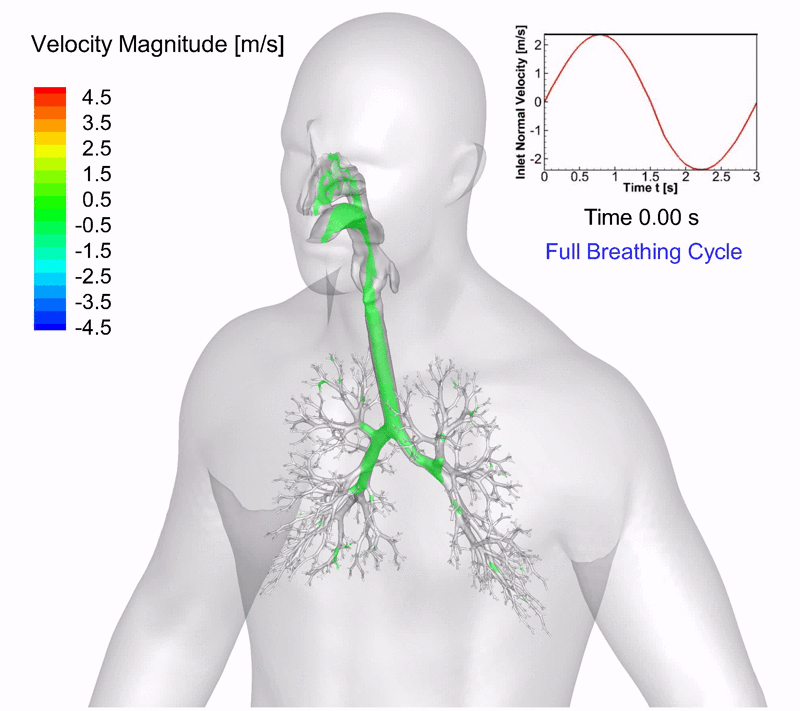OpenFOAM Module
June 2020 – August 2020

Aim:
The life of almost every person has changed this year due to the COVID19 virus. It is an infectious virus, which affects especially the respiratory tract.
The motivation behind the study is to consider the deposition of the medicine into the lungs through an endotracheal tube which would be of interest to the ongoing research.
In order for this study to be successful, a new solver had to be compiled. Although OpenFOAM does include a lot of solvers for particle-laden flows, especially for evaporating and reacting particles, such as ‘coalChemistryFoam’, ‘reactingParcelFoam’ etc.
There is no already implemented transient solver that includes the Lagrangian particle tracking. The already implemented solvers do only have the ability to transport particles without interaction during postprocessing. Hence, to make a solver which solves this issue, the existing solver ‘pimpleFoam’ was
used. This solver was chosen, not for example ‘pisoFoam’, because ‘pimpleFoam’ handles bigger time steps better and includes an automatic time step adjustment, which is essential for practical applications.

Results Discussion:
- The implementation of the new solver proved to be successful.
- The geometry implemented is not very realistic, but helped us to test the solver.
- We had problems selecting a proper time step but the automatic time step adjustment available for the pimpleFoam helped us resolve this issue.
- The boundary conditions at all the outlets (set as p=0) led to an excessive flow through the left outlet, since the right part offered a higher pressure drop.
- Creating a polyhedral mesh with prism layers using OpenFOAM was tough and we had to use a commercial software package for the meshing.
- A higher number of particles should have been injected to make the results clearer, yet it would be computationally expensive for the hardware used.
- A different injection of the particles could have been a better option like ‘sprayInjection’.
